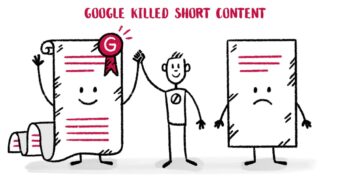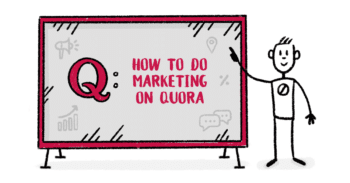Quality vs Quantity: What’s best for your content marketing?

Give me a dollar for every time someone asked me if they should write more low-quality blog posts or fewer high-quality ones, and I’d be a billionaire today. Quality vs quantity might be an even bigger dilemma within SaaS marketers than Build vs. Buy for engineers.
It’s a very polarizing topic… well, maybe, not as much as Covid… but still very controversial. Everyone thinks they found the definitive answer, and they’ll do whatever it takes to convince you. And it’s a controversy that exists in every aspect of our daily life, not just in marketing.
Should you buy 10 hoodies from GAP or 1 from Fendi? Change a Swatch every week or show off your Patek Philippe? Be on a cheap holiday for 3 months or enjoy a luxurious retreat for 2 weeks?
Honestly, it’s up to you. Everybody can decide how they each live their own lives, and what gives them more joy. It’s not for me to question.
Where I can add value is your marketing content strategy. In this area, I’ve direct experience. I have done extensive testing myself to provide you with some insights and a decisional framework to decide if you should lean for quality or quantity.
Let me be clear upfront, and I’m not going to tell you what’s the right choice for your company. Actually, in my experience, you can be successful with both approaches.
The choice boils down to what will deliver results faster and your definition of success.
Do you have to choose between Quality and Quantity?
Unless you have unlimited resources, yes, you have to choose. And even if you had unlimited resources, you’d likely be limited by time.
On this blog, I would have no problem scaling the content production by hiring external content writers. I could sustain the cost, but not the extra time it would take me to manage them, write briefs, and so on.
Actually, as we’ll see in the following chapters, the quantity vs. quality choice for your blog has very little to do with money. Most often, you’ll discover that time is your limiting factor.
So the short answer for 99% of you is yes. You need to pick between quality and quantity. There are very few companies that can afford to produce many blog posts while keeping their quality high.
What you could do is search for a mix in the quality versus quantity game by publishing a blend of high-quality and lower-quality content. This approach makes sense, and it’s honestly what most content marketers are doing, sometimes by design, sometimes randomly.
Advantages of Quantity in content marketing
In the last period, a new breed of SEOs and content marketers has emerged. They claim that backlinks and content promotion are not as relevant as most people think. On the other side, their focus is on the speed of content production.
Content Distribution is at the forefront of this movement. Nick Jordan, the founder, is a great guy and someone I trust. I have no reason to doubt their case studies. They show relatively new domains with a small backlink footprint gaining vast traffic levels in a brief timeframe by publishing an insane quantity of content.
They have managed to get new websites to 479,000 organic visits per month in less than 16 months. Now, that’s an accomplishment! For comparison, it took me around three years to get that amount of traffic for AdEspresso.
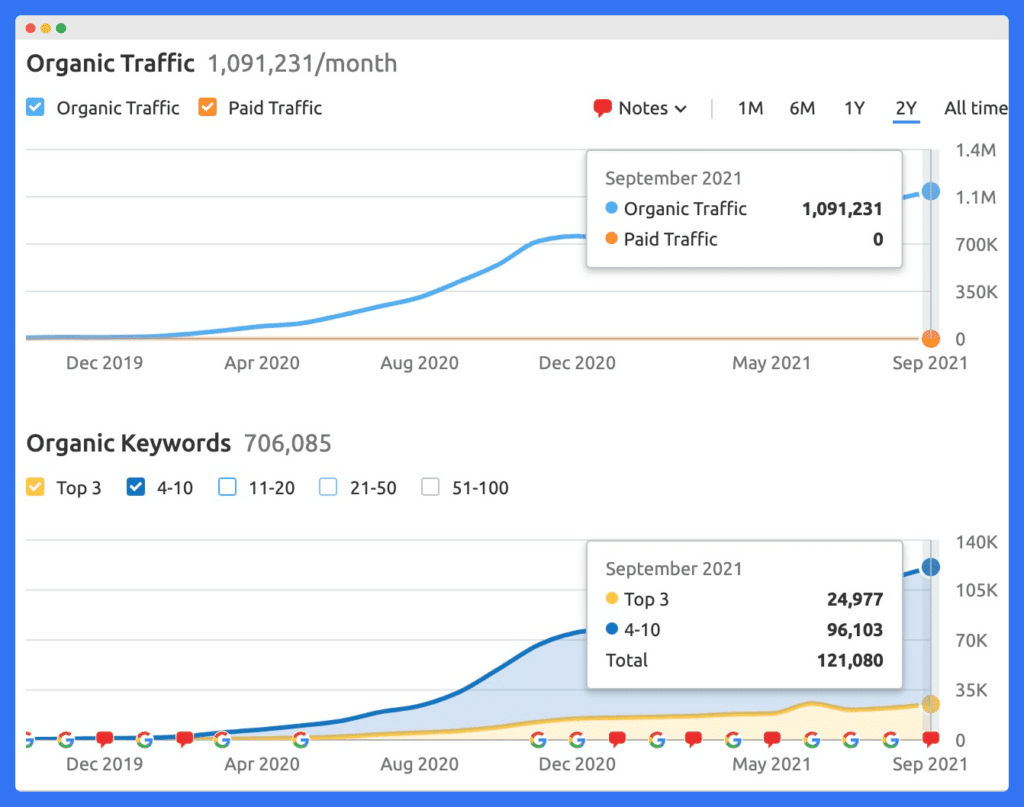
Now that we have some hard evidence that you can generate massive traffic by picking quantity over quality let’s see the advantages of going this route.
Scalability
While most marketers who evangelize quantity over quality will tell you that even publishing a lot of content, they’re not sacrificing quality. I hardly believe that.
Going through their guides, you’ll see that this strategy heavily relies on finding a considerable amount of cheap content writers, building a rigorous process for them to follow while producing content, and automatically as much as possible of the process.
The more tech-savvy are even starting to replace the cheap content writers with AIs.
A good process can keep quality consistent and avoid shallow quality for sure. But it will never magically transform a cheap content writer into an expert in your niche. They’ll merely rewrite the content already out there in a decent way. Fair enough… that’s what most blogs are doing nowadays.
This approach is also a great strength.
Scaling a high-quality content team is hard. Extremely hard.
In Breadcrumbs, we have enough capital to hire as many high-quality content writers as we want. But it’s not easy to find them. The good ones already have a lot of customers, and they cannot produce more than 1 or 2 high-quality blog posts per month.
Also, few of them have domain expertise in the Revenue acceleration space, so to ensure their content is high quality, we need to invest a lot of time in their education, getting them to know the space, the audience, and our tone of voice.
Scaling to 2 blog posts per day would be impossible even if we wanted to.
On the other side, the “Quantity way” preaches lower quality but relies on a process that can make anyone write a good enough blog post. It’s like McDonald’s. Through procedures and checklists, they can have 16 years old who can’t even correctly pair their socks run a restaurant.
There’s no shortage of teenagers or foreign people willing to write content at an affordable price. Once you have a well-oiled machine, scaling is simple and very effective.
Cost-effectiveness
If content quality is not your primary goal, and your main focus is on generating web traffic by creating content as fast as possible, you’ll likely save some money.
Don’t get me wrong; we’re not talking about substantial cost savings. Let’s do some math here.
If you go for high content quality in the United States and in the SaaS niche, you can easily end up paying between $400 and $600 for a 1,000 words blog post (which is not what you want… high-quality content should be 1,500/2,500 words long).
It’s way harder to estimate the cost for lower-quality content. Here the options are endless and can range from $20 to $200 for a 1,000 words blog post. Now let’s say we want to keep a decent quality and settle for $120 per blog post.
Of course, you’re saving a lot of money on a per-word basis. The high-quality, relevant content will cost you $0.4 to $0.6 per word.
The lower quality content will cost you $0.02 to $0.2 per word.
That’s at least a 50% cost saving!
However, there’s a caveat. If you decide to focus on content quantity over quality, you’ll have to invest in quantity and drastically increase your posting frequency.
While you’ll be saving money to produce a single post, you’ll need to publish at least 2x the amount of web content. Personally, I’d go 3x to 5x if your content strategy will focus on quantity.
In the end, the pure cost of content production will be the same in both the quality and quantity scenarios.
Where the real cost-saving happens is content promotion.
If you pick quality over quantity, you’ll have to invest a lot of time and money in promoting each blog post. You cannot afford to publish an excellent quality blog post that turns out to be a miss.
If you pick quantity over quality, all you care about is SEO traffic, and you won’t need much effort promoting your content on social networks, advertising, etc.
After all, you decided to sacrifice quality in favor of a high-frequency schedule. No one is likely going to share your average blog posts anyway.
Advantages of Quality in content marketing
I’ve been a long-time fan of quality over quantity when it comes to generating inbound traffic.
That’s the strategy we used to scale AdEspresso in the first three years, and it worked great for us.
It’s also the strategy adopted by many of the names we all know and respect in the marketing space:
- Rand Fishkin only published 5 blog posts between June and October 2021 on Sparktoro’s blog.
- Brian Dean only published 3 blog posts in the same period on Backlinko. And one is a content refresh.
There’s no shortage of guides preaching that you should focus 100% on quality over quantity. Here’s a slide from one of my old speeches:
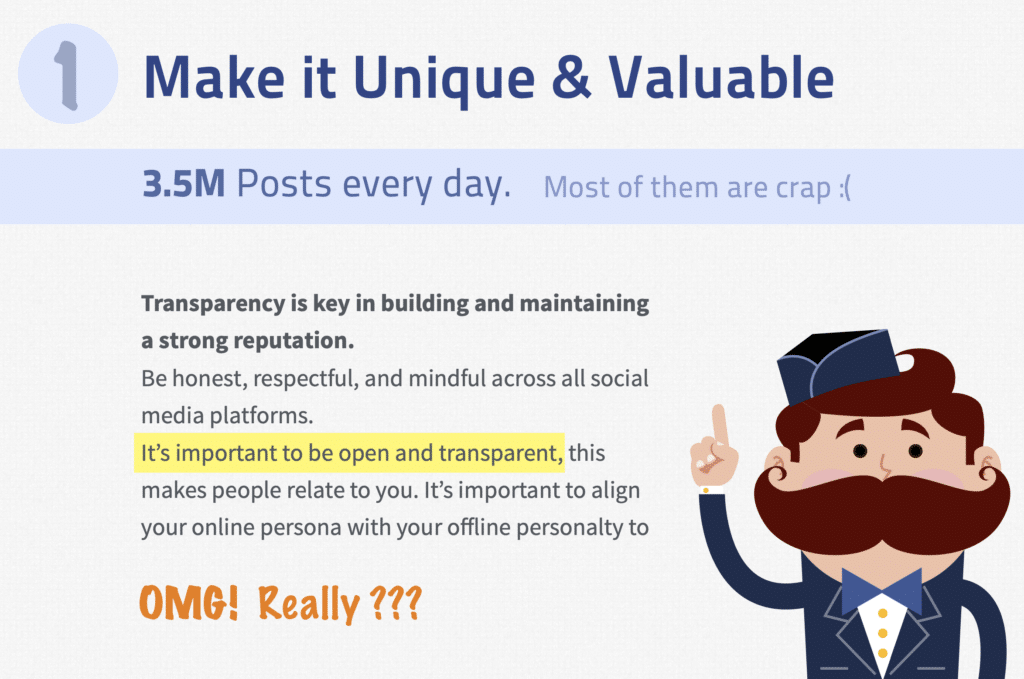
This slide is likely 8 years old. The 3.5M figure is 8 years old. Nowadays that number skyrocketed to over 5 millions just on WordPress!
So let’s see the advantages of picking quality over quantity as most experts recommend.
Brand Awareness
In a world where marketers, especially SaaS marketers, only value what’s measurable, the importance of brand awareness is often underrated.
But let me ask you something. What are you looking for?
Is there an insane amount of one-off traffic that will bounce in 30 seconds or reach a targeted audience and convert them into loyal customers?
Not everyone should necessarily build a brand. If you’re building an affiliate site, it’s cool to generate traffic at the lowest price possible just to generate sales. If you are making money displaying hundreds of banners on each page. Fine… you can ignore branding and quality.
But if you’re a SaaS business and want to build an efficient sales funnel, you need brand awareness, and you need to position yourself as a thought leader in your space, a reliable source of content.
A blog post is always going to determine your first impression of your potential customers. Getting them on your website is not enough. The whole point is having your brand top of mind for them and impressing them by delivering value through your content.
If you are in SaaS marketing, I think you should disregard quantity and focus your company on creating great content.
Link Building
In the quality vs. quantity debate, SEO plays an important role, and so do backlinks. They are considered, by many, one of the most important signals for Google’s algorithm. No matter where they stand in this battle, no SEO will ever tell you, “You need fewer backlinks.”
Moz positions domain-level and page-level links as the most influential ranking factors:
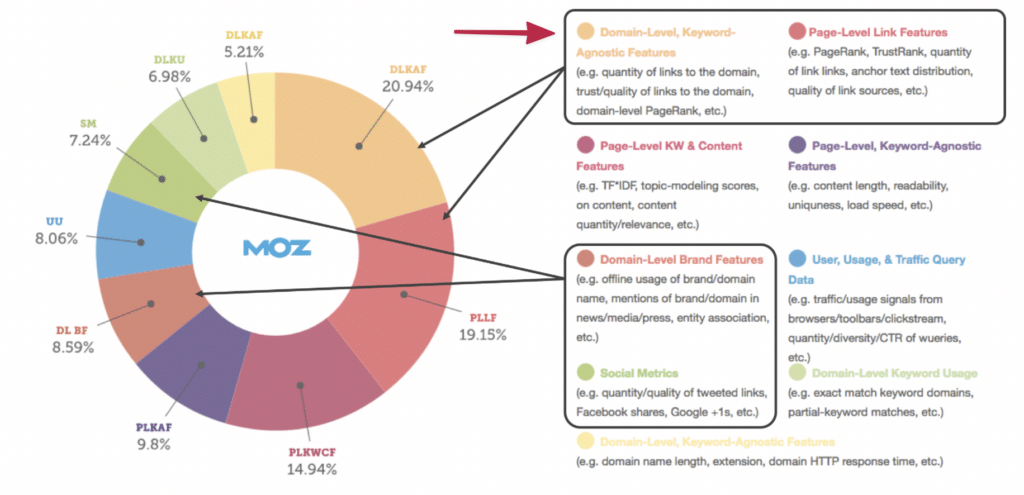
There are many ways of building links to your website.
The ones I see used the most are:
- Cold outreach asking for links
- Guest posting
- Buying them (very risky)
- hiring a marketing agency to do it for you (using the tactics as mentioned above usually)
But there’s another way: Building a trusted brand and filling your publishing schedule with really valuable content that people will want to link to without any effort on your side.

AdEspresso right now has 262k links from 14.5k unique websites. That’s by any means impressive.
Can you guess how many links I bought and how many outreach emails I’ve sent?
Zero.
We just did everything we could to create content, so amazing people would want to link it.
Picking quality over quantity will make your link-building effort way more accessible and cheaper. To build the number of links AdEspresso has today, you’d likely need more than a million dollars.
Conversion Rates
Another significant advantage for those who prefer quality is the better conversion rate they’ll enjoy from their blog.
Do you think your target audience will leave you your email for a pdf version of your post if the post is not high quality? I don’t think so.

Overall the higher the quality of your content, the higher the conversion rate you’ll get from, no matter if you’re trying to convert them into leads for your mailing list or directly into customers.
According to a study by Sumo, when using pop-ups, the average conversion rate of a post is 3.09%. Meanwhile, A great piece of content with the right lead magnet can get up to 9.28%.
That’s a huge jump!
Who wins in the Quality vs. Quantity battle?
None. Or, to be more precise, both.
By now, you should have understood the main difference between a content strategy focused on quantity or quality. It’s up to you to pick which one will generate the most considerable impact on your business.
But before parting ways, I want to leave you with some final considerations to help you find the sweet spot for your editorial calendar. Keep in mind this is not a set-and-forget decision.
Within your marketing team, there should be a continuous discussion on the best approach at any point in time.
The stage of your company matters
My personal opinion is that when you’re just getting started, quality has the most significant impact.
It helps you build relationships, reputation, and a strong brand. It also helps to attract your first few backlinks to get more traffic.
In the early days, when you cannot rely on a high Domain Rank, each article should really stand out to have a chance to rank unless you build a content engine that can publish 20 posts per week to compensate for the missing authority of your website.
On the other side, in a later stage, once you have a great backlink profile and a high domain rank, you can afford to lower the quality and increase the quantity.
It’ll let you rank for more keywords, and the trust you’ve built from Google will help you easily rank in the top spots, even website pages with lower writing quality.
Quality doesn’t mean long-format.
Think about your everyday life. Quality is often not measured with a numerical value. A nearly perfect but small diamond can be way more valuable than a huge one with imperfections a dim light.
The same applies to content. I’ve already covered the topic in my post on long vs. short-form content.
SEO best practices have convinced us that you should write a lot to create great quality content and make it super long. That’s not the case.
Your thought leadership and your copywriting skills are way more important than the length of the content.
One way to get the most of both words is to work hard to create short but insanely valuable pieces of content and thus carve out more time to write more often with a regular schedule.
Using the content cluster approach, you might cover all the bases of a topic in multiple posts, achieving both quality and quantity.
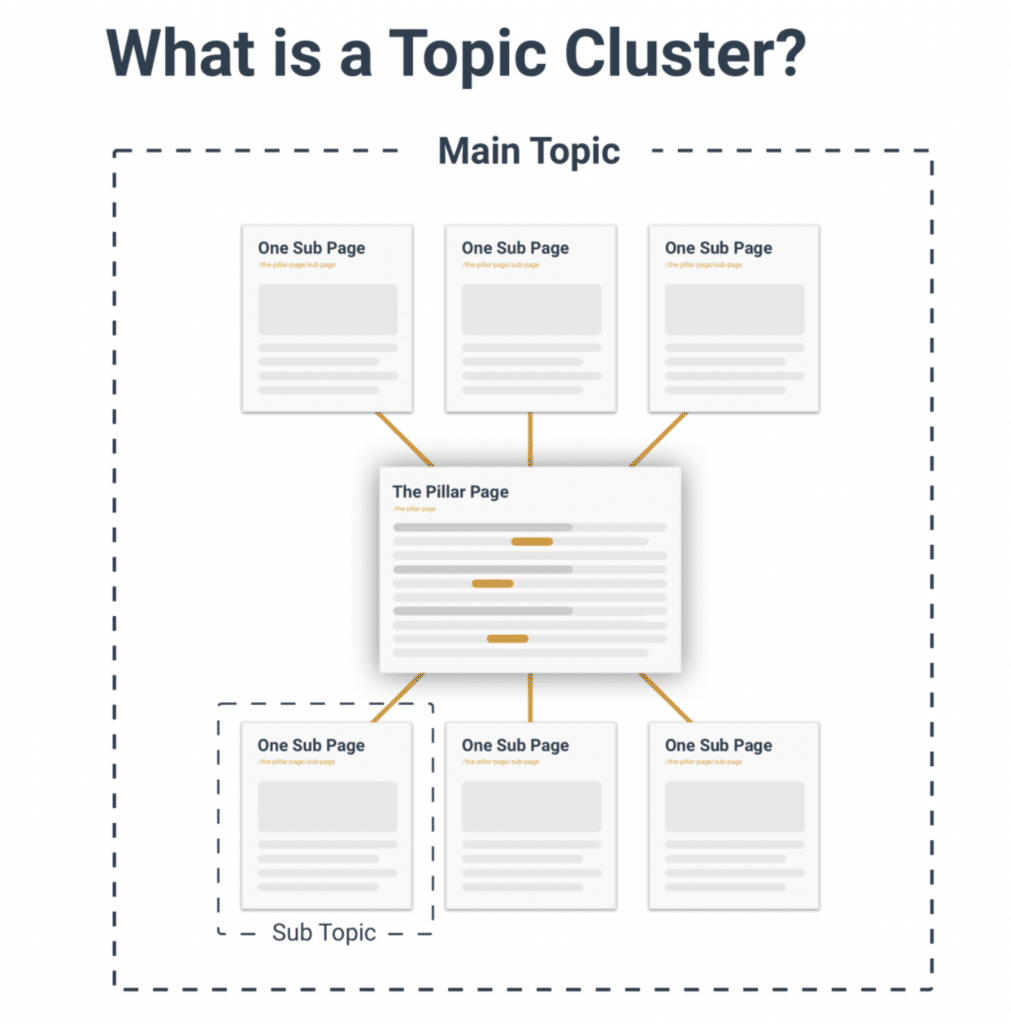
Clearly define your goals: more traffic or more sales?
This is key to picking the right strategy and if you got to this point, you should now understand the pros and cons of writing a lot vs. writing well.
If you are a pure publisher and live out of CPM, you likely want more content published to increase website traffic. Very likely, quantity matters more than quality for you.
If you are a SaaS business, you likely care more about sales and leads than mere traffic.
Just ask yourself, who would you rather buy from? The company providing content as a constant article stream of valuable information or the company you often visit because they consistently rank high. Still, you hit the back button as soon as you recognize the company logo?
SaaS companies should aim to convert as many website visitors as possible. To do this, it’s key to provide more value in articles that can additionally be converted into an e-book for lead generation.
SaaS Bonus: Get better results in advertising through quantity
There’s one exception to my statement that SaaS businesses should prioritize quality over quantity: if advertising works very well for you.
If you have advertising campaigns and landing pages that convert very well, your main problem is likely how to send more qualified traffic there through advertising networks.
In this scenario, you might want to push out more content than usual, even if it means lowering the quality.
The reason is simple. Rather than converting users right away from your blog, you could use retargeting pixels to tag them when they visit your site and convert them later through Ads.
Basically, you’d be creating content just to build retargeting audiences of people interested in your space.
A great example of what you could do here comes from the stock trading app Robinhood. Their website has a Learn section with a massive amount of average quality content around trading.
Every page answers a particular question; they make great use of content clustering and can likely produce a lot of content quickly.
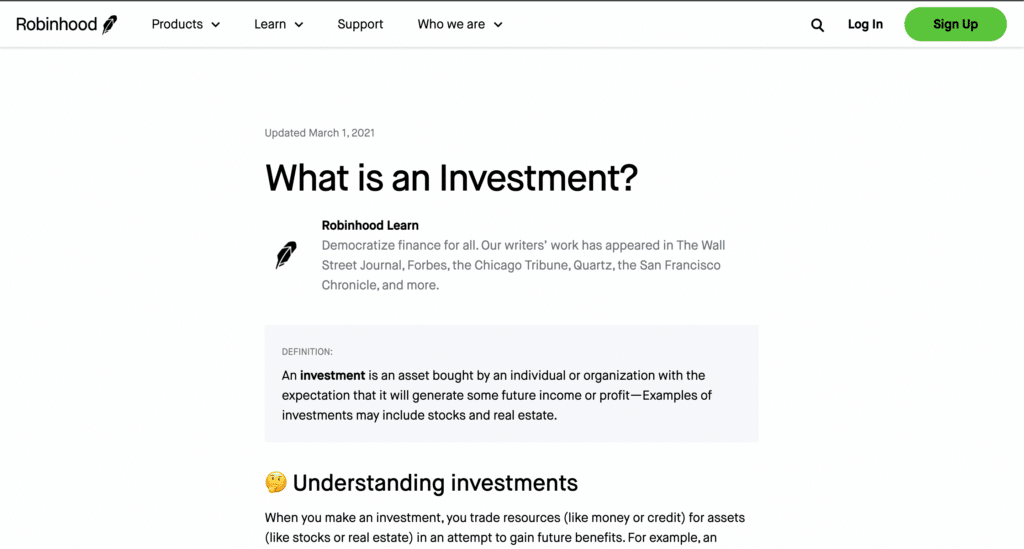
I find it a great example of a strategy focusing on quantity while keeping quality at a decent level.
What’s your winner in quantity vs. quality?
That’s it, and I think by now, I’ve shared everything I’ve learned, scaling multiple SaaS blogs to more than half-million visits per month.
I just want to leave you with some reassurance: Don’t worry, whatever strategy you’ll pick, if you execute it properly, you’ll be able to succeed. And at any point in time, you’ll be able to correct the course if it’s not working as expected.
If you have direct experience in quality vs. quantity choices for the editorial calendar, please share your thoughts in the comments! And if you have any specific questions… just ask them!

